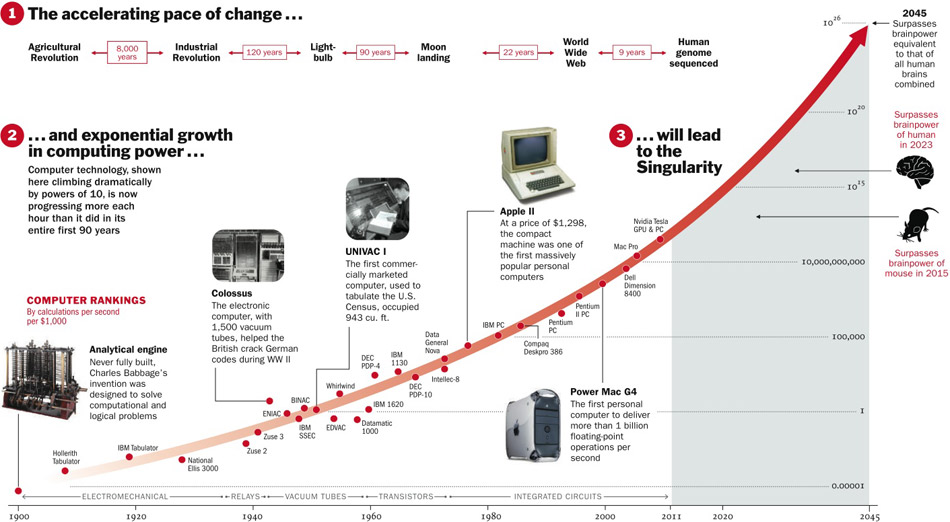As AI tools like ChatGPT, Web3 applications like Decentraland and cryptocurrencies like (the unfortunate) FTX continue dominating the headlines, it can feel as though new technology trends are coming out of nowhere and at surprising speeds.
And while there have been many notable advances of late, it isn’t as unprecedented as most people think – so long as you have the right mindset.
Approaching Futurist Thinking
At digitalNow 2022, Amith Nagarajan, Founder & Chairman of Blue Cypress, opened the conference with a challenge for association leaders to adopt a futurist mindset.
Put simply, futurist thinking is an approach to understanding and predicting the future by examining existing trends and anticipating their effects. It considers the current context and short and long-term impacts to assess scenarios and use data to make informed decisions.
One example of futurist thinking in action is the rapid growth of artificial intelligence (AI). AI technology has been in development since the 1950s, but recent advances (like ChatGPT) have made it more accessible than ever before.
Abundance vs. Scarcity
The first step to approaching futurist thinking often requires a change in mindset. Traditionally, we’ve had a scarcity mindset. Resources like land, labor, capital and energy were all limited or cost-prohibitive, making innovation and expansion challenging.
As author and futurist thinker Peter Diamandis puts it, “In a world of scarcity, there’s a limited pie. If your neighbor gets a slice, then you get a smaller slice. This is a world of limited resources and zero-sum competition.”
However, digitization has helped many sectors move towards an abundance mindset, which relies on a few key concepts:
- Information is freely available and easy to access online.
- We can communicate and collaborate with anyone, anywhere, through virtual and digital channels.
- Internet access is becoming readily available globally with the expansion of satellite technology.
And this abundant access to information can have a very real impact on the association space. “As associations, that was your business model,” says Nagarajan. The thinking was, “we're the only game in town and the only people in the world who publish credible content in topics A, B, and C.” However, your members and potential members now have access to more content than ever, and it won’t cost them annual dues, either.
Understanding Exponential Growth
The second step to approaching futurist thinking is understanding the law of accelerating returns, coined by futurist Ray Kurzweil. The basic premise is that technology and innovation build upon themselves – meaning that every new iteration is developed faster and faster. One of the best examples of this exponential growth is Moore’s Law.
Gordon Moore, the co-founder and former CEO of Intel, predicted that the number of transistors on a chip (and thereby computing power) would double for the same price point every 18 months.

This chart, a part of the digitalNow presentation, helped illustrate that exponential growth. In the 1950s, $1,000 bought you one computation per second. Yet, only 20 years later, you were getting 70,000 computations for that same amount. Fast forward to 2015, and our computational power is more than what’s possible with a mouse’s brain power. Looking ahead, computation power is predicted to surpass the brainpower of every human on earth by 2045 – all while driving down costs with each development.
Remember when we mentioned that these technological innovations were unprecedented? The reality is not so much. Just like we’ve seen exponential growth in computational powers, the same goes for AI.
Why It Matters to Associations
Undoubtedly, technology will have a significant impact on the association space. Whether it’s an asset or a liability depends on the approach your organization and leadership take.
While it can seem that these innovations have little to do with your organization’s mission or members, the reality is once they move into that exponential growth curve, they can quickly disrupt any industry.
So how can you cultivate a futurist mindset?

The Association Futurist Starter Kit
What if you could look into the future to divine what trends and technologies could disrupt your industry before they actually happen? Now, what if we told you that you already have that power?
Download Now
- Recognize Abundant Opportunities: Although we’re naturally programmed to have a scarcity mindset, we’re actually in a time of abundance. Information is more readily available, and the technology we need to access it is too. While it can grow your association's reach, it also means there may be serious competition soon.
- Don’t Ignore What You Don’t Understand: A few years ago, the scope of AI for most folks was the technology behind “Terminator.” Today, we realize it's a part of our daily lives, and we’re experimenting with tools daily. Don’t ignore something simply because you don’t understand it. Instead, work as a team to determine if and how it can be used in your association.
Look Outside your Organization: Finally, many of these innovations happen outside the association space. However, that doesn’t mean we can ignore them. Organizations can often learn some of the most valuable lessons from the for-profit sector, and keeping up with trends is the best way to ensure your organization is prepared for the future.
Tags:
Association Management
February 5, 2023


